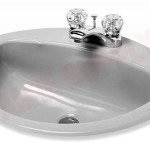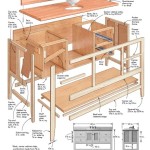Bathroom and Kitchen Ventilation: Integrating Extractor Fans with Flat Roof Structures
Proper ventilation is crucial in maintaining a healthy and comfortable indoor environment, particularly in areas prone to moisture and odors, such as bathrooms and kitchens. An essential component of an effective ventilation system is the extractor fan. This article examines the integration of extractor fans with flat roof structures, specifically focusing on bathroom and kitchen applications. This encompasses considerations for fan selection, installation techniques, and maintenance strategies to ensure optimal performance and longevity of the ventilation system.
The presence of excess moisture in bathrooms and kitchens can lead to a multitude of problems. These include the growth of mold and mildew, damage to building materials such as drywall and paint, and the exacerbation of respiratory issues. Cooking activities, showering, and even washing dishes contribute significantly to elevated humidity levels. Without adequate ventilation, this moisture can accumulate, creating an environment conducive to microbial growth and material degradation. Extractors fans play a vital role in removing this moisture-laden air, preventing these detrimental effects.
Unlike pitched roofs, flat roofs present unique challenges for ventilation system design and installation. The lack of natural slope means that traditional ventilation methods, such as gable vents, are ineffective. Therefore, specialized solutions are required to ensure proper airflow and prevent moisture buildup underneath the roofing membrane. This often involves using specifically designed roof vents that integrate with extractor fans.
Key Considerations for Extractor Fan Selection
Selecting the appropriate extractor fan is paramount for effective ventilation. Several factors must be considered to ensure the fan meets the specific needs of the bathroom or kitchen environment. These factors include the fan's airflow capacity, noise level, energy efficiency, and features such as humidistats or timers.
Airflow Capacity (CFM): Airflow capacity, measured in cubic feet per minute (CFM), indicates the volume of air the fan can exhaust in a given time. The required CFM is determined by the size of the room. A general guideline is to aim for at least eight air changes per hour (ACH) in bathrooms and ten to fifteen ACH in kitchens due to the higher potential for moisture and odor generation from cooking. Online calculators and ventilation standards provide specific formulas to calculate the precise CFM required based on room dimensions.
Noise Level (Sones): Extractor fans can generate noise during operation, which can be disruptive, especially in residential settings. The noise level is measured in sones. A lower sone rating indicates a quieter fan. For bathrooms and kitchens, selecting a fan with a sone rating of 1.0 or less is generally recommended to minimize noise pollution. Consider the location of the fan relative to living spaces, and opt for even quieter models in areas where noise sensitivity is a concern.
Energy Efficiency: Energy-efficient extractor fans minimize energy consumption and reduce operating costs. Look for fans with Energy Star certification, which indicates that they meet stringent energy efficiency standards. Some models incorporate features such as DC motors and variable speed controls to further optimize energy usage. While the initial cost of energy-efficient fans may be higher, the long-term savings on energy bills can offset this initial investment.
Features and Controls: Modern extractor fans offer a range of features and control options to enhance functionality and convenience. Humidistats automatically activate the fan when humidity levels reach a predetermined threshold, ensuring continuous moisture control. Timers allow the fan to run for a set period after the room is vacated, ensuring that all residual moisture is removed. Motion sensors can also be integrated to activate the fan when movement is detected in the room. The selection of these features depends on the specific needs and preferences of the user.
Installation Techniques for Flat Roof Venting
The installation process for integrating extractor fans with flat roof structures requires careful planning and execution to ensure proper ventilation and prevent leaks. This section outlines key steps and considerations for a successful installation.
Vent Selection: Choose a roof vent specifically designed for use with extractor fans on flat roofs. These vents typically feature a low profile design to minimize wind resistance and prevent water intrusion. The vent should be compatible with the diameter of the exhaust duct and meet local building codes. Consider the material of the vent in relation to the roofing material to ensure compatibility and prevent galvanic corrosion.
Location Determination: Determine the optimal location for the roof vent, considering factors such as proximity to the extractor fan, structural support, and potential obstructions. The vent should be located as close as possible to the extractor fan to minimize the length of the exhaust duct. Avoid placing the vent in areas prone to ponding water or snow accumulation. Ensure that the vent will be adequately supported by the roof structure to prevent sagging or damage to the roofing membrane.
Cutting the Opening: Carefully cut an opening in the roofing membrane and underlying structure to accommodate the roof vent. Use appropriate tools and techniques to avoid damaging the roofing material or compromising the structural integrity of the roof. Seal the edges of the opening with a compatible sealant to prevent water intrusion. Follow the manufacturer's instructions for the specific roof vent being installed.
Ductwork Installation: Connect the extractor fan to the roof vent using insulated ductwork. Insulated ductwork prevents condensation from forming inside the duct, which can lead to moisture problems and reduced airflow. Ensure that the ductwork is properly supported and routed to minimize bends and obstructions. Seal all connections with metal foil tape or duct sealant to prevent air leaks. Avoid using flexible ductwork for long runs, as it can significantly restrict airflow.
Sealing and Waterproofing: Thoroughly seal the roof vent to the roofing membrane to prevent water intrusion. Use a high-quality sealant that is compatible with the roofing material and designed for exterior use. Follow the manufacturer's instructions for applying the sealant. Inspect the installation carefully for any gaps or voids and reapply sealant as needed. Consider installing a flashing kit around the roof vent for added protection against water damage.
Maintenance and Troubleshooting
Regular maintenance is essential for ensuring the continued performance and longevity of the extractor fan and ventilation system. This section outlines key maintenance tasks and troubleshooting tips.
Cleaning the Fan: Periodically clean the extractor fan blades and housing to remove dust and debris. Dust accumulation can reduce airflow and increase noise levels. Turn off the power to the fan before cleaning. Use a vacuum cleaner or soft brush to remove loose debris. Wipe the fan blades and housing with a damp cloth. Avoid using harsh chemicals or abrasive cleaners.
Cleaning the Vent: Inspect the roof vent regularly for debris accumulation, such as leaves, twigs, or snow. Clear any obstructions to ensure proper airflow. Check the vent for damage, such as cracks or corrosion. Repair or replace damaged vents promptly to prevent water intrusion.
Checking the Ductwork: Inspect the ductwork for leaks, damage, or sagging. Seal any leaks with metal foil tape or duct sealant. Replace damaged sections of ductwork. Ensure that the ductwork is properly supported to prevent sagging, as sagging can restrict airflow and lead to condensation buildup.
Troubleshooting Common Issues: Common issues with extractor fans include reduced airflow, excessive noise, and electrical problems. Reduced airflow may be caused by a dirty fan, obstructed ductwork, or a malfunctioning fan motor. Excessive noise may be caused by loose fan blades, a worn-out motor, or vibrations. Electrical problems may be caused by a faulty switch, wiring issues, or a blown fuse. Consult a qualified electrician to diagnose and repair electrical problems.
Professional Inspection: Schedule a professional inspection of the ventilation system periodically to identify potential problems and ensure optimal performance. A qualified HVAC technician can inspect the fan, ductwork, and roof vent, and recommend any necessary repairs or maintenance. This proactive approach can help prevent costly repairs and extend the life of the ventilation system.
By carefully considering these factors and following proper installation and maintenance procedures, homeowners can effectively integrate extractor fans with flat roof structures to create a healthy and comfortable indoor environment in their bathrooms and kitchens. This proactive approach will minimize moisture-related problems, improve air quality, and protect the structural integrity of the building.

Active Ventilation 4 In Dia Keepa Vent An Aluminum Roof For Flat Roofs Kv The Home Depot

Flat Roof Cooker Hood Outside External Motor Unit

Active Ventilation 6 In Dia Keepa Vent An Aluminum Roof For Flat Roofs Kv The Home Depot

Active Ventilation 12 In Dia Keepa Vent An Aluminum Roof For Flat Roofs Kv The Home Depot

Bath Fan Kitchen Exhaust Roof Vent Painted Roofco

Bath Fan Kitchen Exhaust Roof Vent With Extension Painted Roofco

Flat Roof Gooseneck Vents Hvac Dryer Exhaust

Flat Roof Cooker Hood Outside External Motor Unit

Active Ventilation 3 In Dia Keepa Vent An Aluminum Roof For Flat Roofs Kv The Home Depot

Broan Nutone 3 In To 4 Roof Vent Kit For Round Duct Steel Black Rvk1a The Home Depot
Related Posts







